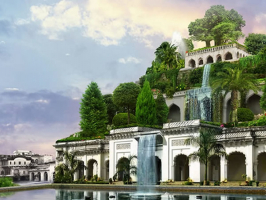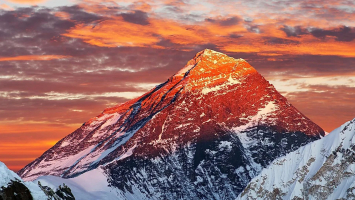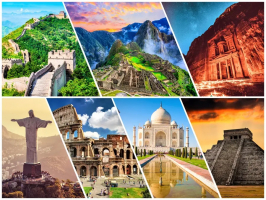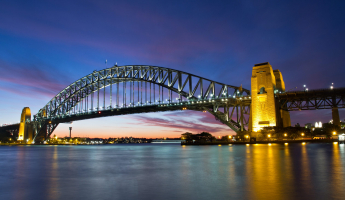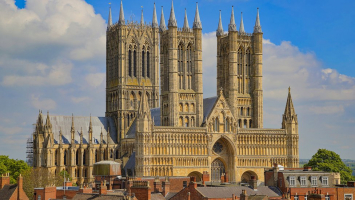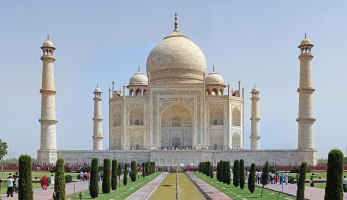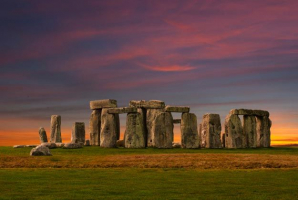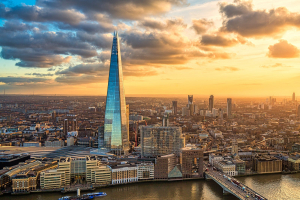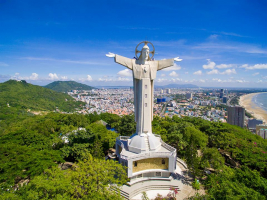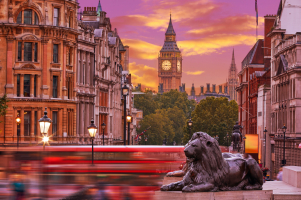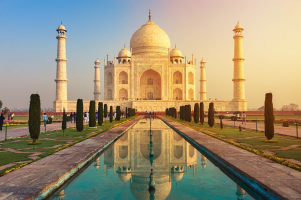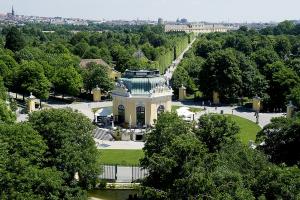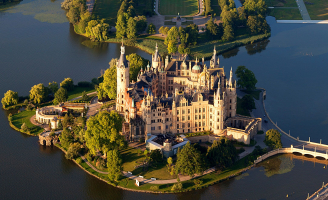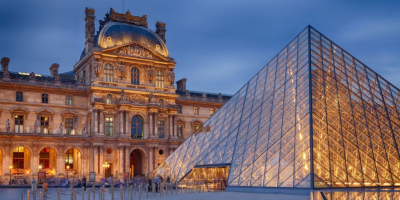Top 10 Famous Wonders Over The World
Wonders of the world are great works of nature and man. It is not only known for its unique beauty but also hidden within the social and cultural civilization ... read more...of the era. So, let's explore some of today's famous wonders with Toplist!
-
The Great Pyramid of Giza is a defining symbol of Egypt and the last of the ancient Seven Wonders of the World. It is located on the Giza plateau near the modern city of Cairo and was built over a twenty-year period during the reign of the king Khufu (2589-2566 BCE, also known as Cheops) of the 4th Dynasty. The Great Pyramid was the tallest structure made by human hands in the world for over 3,000 years until the Eiffel Tower was completed in Paris, France in 1889 CE.
The Great Pyramid of Giza rises to a height of 479 feet (146 metres) with a base of 754 feet (230 metres) and is comprised of over two million blocks of stone. Some of these stones are of such immense size and weight (such as the granite slabs in the King's Chamber) that the logistics of raising and positioning them so precisely seems an impossibility by modern standards. Although many theories persist as to the purpose of the pyramid, the most widely accepted understanding is that it was constructed as a tomb for the king. Exactly how it was built, however, still puzzles people in the modern day. The theory of ramps running around the outside of the structure to move the blocks into place has been largely discredited. So-called "fringe" or "New Age" theories abound, in an effort to explain the advanced technology required for the structure, citing extra-terrestrials and their imagined frequent visits to Egypt in antiquity. These theories continue to be advanced in spite of the increasing body of evidence substantiating that the pyramid was built by the ancient Egyptians using technological means which, most likely, were so common to them that they felt no need to record them. Still, the intricacy of the interior passages, shafts, and chambers (The King's Chamber, Queen's Chamber, and Grand Gallery) as well as the nearby Osiris Shaft, coupled with the mystery of how the pyramid was built at all and its orientation to cardinal points, encourages the persistence of these fringe theories.
Another enduring theory regarding the monument's construction is that it was built on the backs of slaves. Contrary to the popular opinion that Egyptian monuments in general, and the Great Pyramid in particular, were built using Hebrew slave labor, the pyramids of Giza and all other temples and monuments in the country were constructed by Egyptians who were hired for their skills and compensated for their efforts. No evidence of any kind whatsoever - from any era of Egypt's history - supports the narrative events described in the biblical Book of Exodus. Worker's housing at Giza was discovered and fully documented in 1979 CE by Egyptologists Lehner and Hawass but, even before this evidence came to light, ancient Egyptian documentation substantiated payment to Egyptian workers for state-sponsored monuments while offering no evidence of forced labor by a slave population of any particular ethnic group. Egyptians from all over the country worked on the monument, for a variety of reasons, to build an eternal home for their king which would last through eternity.
Nation: Egypt
Details: https://www.worldhistory.org/Great_Pyramid_of_Giza/
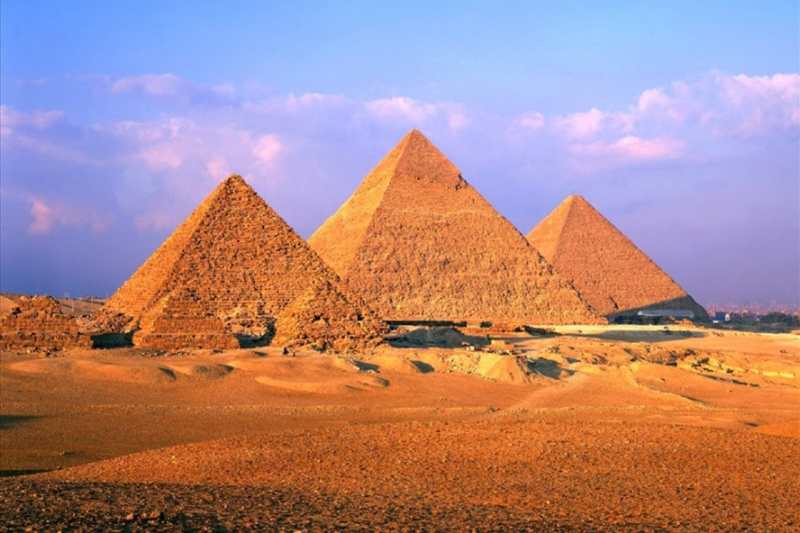
The Great Pyramid of Giza (Photo: Getty Images) 360° Travel inside the Great Pyramid of Giza (youtube: BBC) -
Colosseum, also called Flavian Amphitheatre, giant amphitheatre built in Rome under the Flavian emperors. Construction of the Colosseum was begun sometime between 70 and 72 CE during the reign of Vespasian. It is located just east of the Palatine Hill, on the grounds of what was Nero’s Golden House. The artificial lake that was the centrepiece of that palace complex was drained, and the Colosseum was sited there, a decision that was as much symbolic as it was practical. Vespasian, whose path to the throne had relatively humble beginnings, chose to replace the tyrannical emperor’s private lake with a public amphitheatre that could host tens of thousands of Romans.
The Colosseum is a freestanding structure of stone and concrete, using a complex system of barrel vaults and groin vaults and measuring 620 by 513 feet (189 by 156 metres) overall. Three of the arena’s stories are encircled by arcades framed on the exterior by engaged columns in the Doric, Ionic, and Corinthian orders. The main structural framework and facade are travertine, the secondary walls are volcanic tufa, and the inner bowl and the arcade vaults are concrete.
The amphitheatre seated some 50,000 spectators, who were shielded from the sun by a massive retractable velarium (awning). Supporting masts extended from corbels built into the Colosseum’s top, or attic, story, and hundreds of Roman sailors were required to manipulate the rigging that extended and retracted the velarium. The Colosseum was the scene of thousands of hand-to-hand combats between gladiators, of contests between men and animals, and of many larger combats, including mock naval engagements.
Nation: Italy
Details: https://www.britannica.com/topic/Colosseum
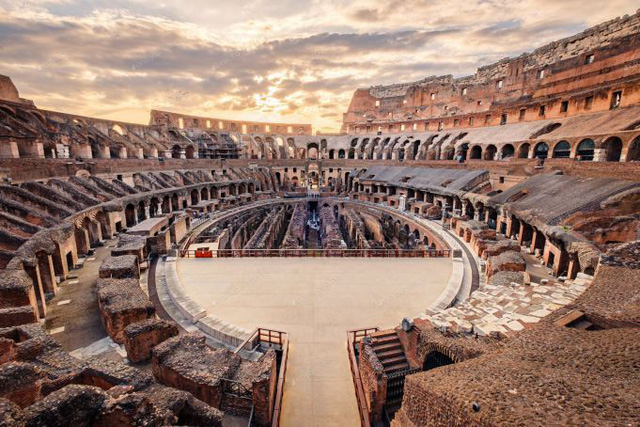
Colosseum of Rome (Photo: wantedinrome.com) National Geographic Documentary Secrets of the Colosseum in Rome BBC Nature Documentary 2017 (youtube: Documentary 2017) -
Great Wall of China (“10,000-Li Long Wall”), extensive bulwark erected in ancient China, one of the largest building-construction projects ever undertaken. The Great Wall actually consists of numerous walls—many of them parallel to each other—built over some two millennia across northern China and southern Mongolia. The most extensive and best-preserved version of the wall dates from the Ming dynasty (1368–1644) and runs for some 5,500 miles (8,850 km) east to west from Mount Hu near Dandong, southeastern Liaoning province, to Jiayu Pass west of Jiuquan, northwestern Gansu province. This wall often traces the crestlines of hills and mountains as it snakes across the Chinese countryside, and about one-fourth of its length consists solely of natural barriers such as rivers and mountain ridges. Nearly all of the rest (about 70 percent of the total length) is actual constructed wall, with the small remaining stretches constituting ditches or moats. Although lengthy sections of the wall are now in ruins or have disappeared completely, it is still one of the more remarkable structures on Earth.
Large parts of the fortification system date from the 7th through the 4th century BCE. In the 3rd century BCE Shihuangdi (Qin Shihuang), the first emperor of a united China (under the Qin dynasty), connected a number of existing defensive walls into a single system. Traditionally, the eastern terminus of the wall was considered to be Shanhai Pass (Shanhaiguan) in eastern Hebei province along the coast of the Bo Hai (Gulf of Chihli), and the wall’s length—without its branches and other secondary sections—was thought to extend for some 4,160 miles (6,700 km). However, government-sponsored investigations that began in the 1990s revealed sections of wall in Liaoning, and aerial and satellite surveillance eventually proved that this wall stretched continuously through much of the province. The greater total length of the Ming wall was announced in 2009. The Great Wall was designated a UNESCO World Heritage site in 1987.
Nation: China
Details: https://www.britannica.com/topic/Great-Wall-of-China
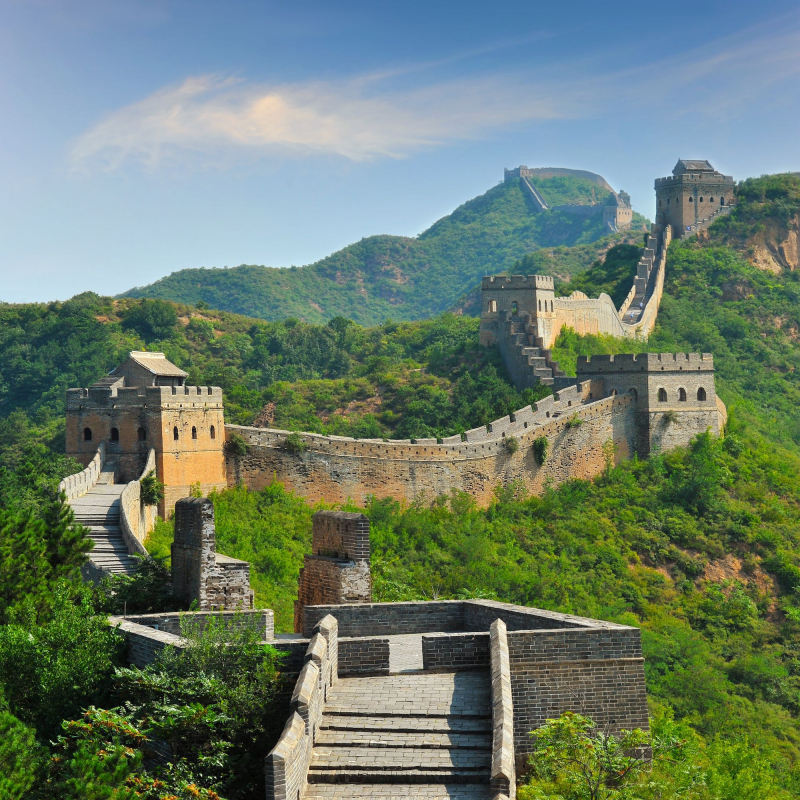
Great Wall of China (Photo: HUNG CHUNG CHIH) Secrets Of The Great Wall - Ancient China From Above (yotube: National Geographic Asia) -
Christ the Redeemer, colossal statue of Jesus Christ at the summit of Mount Corcovado, Rio de Janeiro, southeastern Brazil. The statue of Christ the Redeemer was completed in 1931 and stands 98 feet (30 metres) tall, its horizontally outstretched arms spanning 92 feet (28 metres). The statue has become emblematic of both the city of Rio de Janeiro and the whole nation of Brazil.
The statue, made of reinforced concrete clad in a mosaic of thousands of triangular soapstone tiles, sits on a square stone pedestal base about 26 feet (8 metres) high, which itself is situated on a deck atop the mountain’s summit. The statue is the largest Art Deco-style sculpture in the world. Permission was granted, and the foundation stone of the base was ceremonially laid on April 4, 1922—to commemorate the centennial on that day of Brazil’s independence from Portugal—although the monument’s final design had not yet been chosen. Brazilian artist Carlos Oswald has been credited with the idea for the figure’s standing pose with arms spread wide. The French sculptor Paul Landowski, who collaborated with Silva Costa on the final design, has been credited as the primary designer of the figure’s head and hands. During that time materials and workers were transported to the summit via railway. After its completion, the statue was dedicated on October 12, 1931. Over the years it has undergone periodic repairs and renovations, including a thorough cleaning in 1980, in preparation for the visit of Pope John Paul II to Brazil that year, and a major project in 2010, when the surface was repaired and refurbished.
Nation: Brazil
Details: https://www.britannica.com/topic/Christ-the-Redeemer
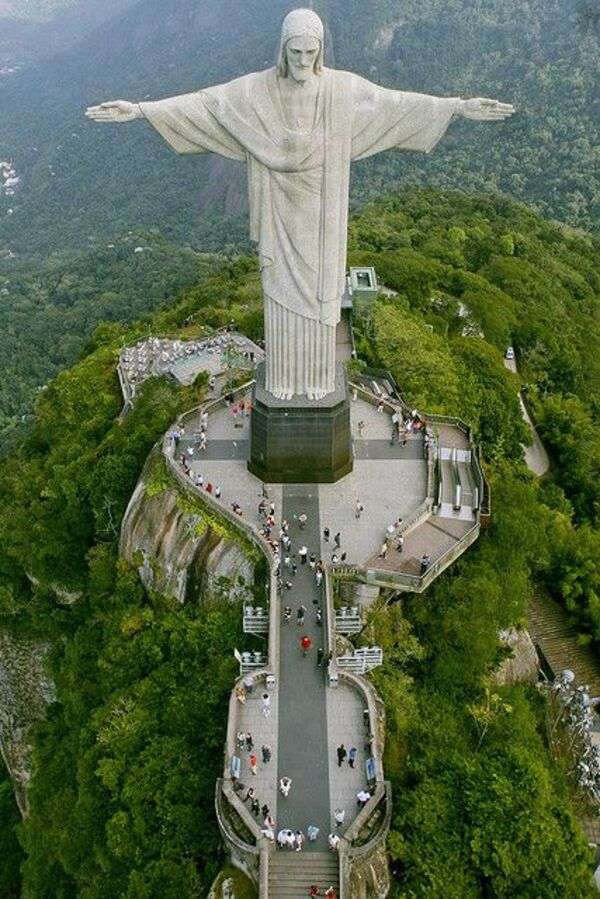
Christ the Redeemer (Photo: besttravelphotos.wordpress.com) The Majestic Statue of Christ the Redeemer - Seven Wonders of the Moden World (youtube: See U in History/Mythology) -
Taj Mahal, also spelled Tadj Mahall, mausoleum complex in Agra, western Uttar Pradesh state, northern India. The Taj Mahal was built by the Mughalemperor Shah Jahān (reigned 1628–58) to immortalize his wife Mumtaz Mahal(“Chosen One of the Palace”), who died in childbirth in 1631, having been the emperor’s inseparable companion since their marriage in 1612. India’s most famous and widely recognized building, it is situated in the eastern part of the city on the southern (right) bank of the Yamuna (Jumna) River. Agra Fort (Red Fort), also on the right bank of the Yamuna, is about 1 mile (1.6 km) west of the Taj Mahal.
The plans for the complex have been attributed to various architects of the period, though the chief architect was probably Ustad Aḥmad Lahawrī, an Indian of Persian descent. The five principal elements of the complex—main gateway, garden, mosque, jawāb (literally “answer”; a building mirroring the mosque), and mausoleum (including its four minarets)—were conceived and designed as a unified entity according to the tenets of Mughal building practice, which allowed no subsequent addition or alteration. Building commenced about 1632. More than 20,000 workers were employed from India, Persia, the Ottoman Empire, and Europe to complete the mausoleum itself by about 1638–39; the adjunct buildings were finished by 1643, and decoration work continued until at least 1647. In total, construction of the 42-acre (17-hectare) complex spanned 22 years.
Resting in the middle of a wide plinth 23 feet (7 metres) high, the mausoleum proper is of white marble that reflects hues according to the intensity of sunlight or moonlight. Each with a wide central arch rising to 108 feet (33 metres) at its apex and chamfered (slanted) corners incorporating smaller arches. The majestic central dome, which reaches a height of 240 feet (73 metres) at the tip of its finial. The interior of the mausoleum is organized around an octagonal marble chamber ornamented with low-relief carvings and semiprecious stones (pietra dura).
Nation: India
Details: https://www.britannica.com/topic/Taj-Mahal
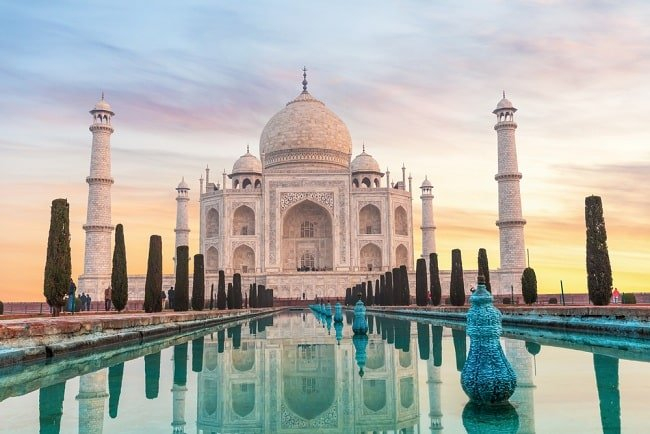
Taj Mahal (Photo: AlexAnton/Shutterstock) TAJ MAHAL (Agra, India): full tour (youtube: the Luxury Travel Expert) -
Chichén Itzá, ruined ancient Maya city occupying an area of 4 square miles (10 square km) in south-central Yucatán state, Mexico. It is thought to have been a religious, military, political, and commercial centre that at its peak would have been home to 35,000 people. The site first saw settlers in 550, probably drawn there because of the easy access to water in the region via caves and sinkholes in limestone formations, known as cenotes. The brilliant history of Mayan culture can be seen at the splendid ruins of Chichén Itzá. This mighty city was once a center for the trade in cloth, slaves, honey and salt. It thrived from about 800 to 1200, and served as the political and economic center of the Maya civilization. The most familiar ruin at the site is El Caracol, a sophisticated astronomical observatory.
Chichén Itzá is located some 90 miles (150 km) east-northeast of Uxmal and 75 miles (120 km) east-southeast of the modern city of Mérida. The only source of water in the arid region around the site is from the cenotes. Two big cenotes on the site made it a suitable place for the city and gave it its name, from chi (“mouths”), chen (“wells”), and Itzá, the name of the Maya tribe that settled there. Chichén Itzá was designated a UNESCO World Heritage site in 1988.
Nation: Mexico
Details: https://www.britannica.com/place/Chichen-Itza
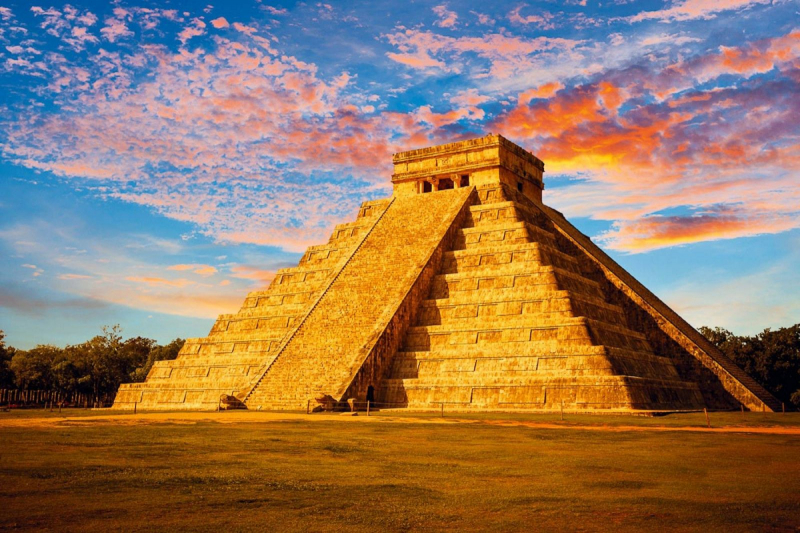
Chichén Itzá (Photo: Trekkmarket.com) Inside Chichén Itzá - 360 (youtube: National Geographic) -
Stonehenge, prehistoric stone circle monument, cemetery, and archaeological site located on Salisbury Plain, about 8 miles (13 km) north of Salisbury, Wiltshire, England. Though there is no definite evidence as to the intended purpose of Stonehenge, it was presumably a religious site and an expression of the power and wealth of the chieftains, aristocrats, and priests who had it built—many of whom were buried in the numerous barrows close by. It was aligned on the Sun and possibly used for observing the Sun and Moon and working out the farming calendar. Or perhaps the site was dedicated to the world of the ancestors, separated from the world of the living, or was a healing centre. Looking toward the sunrise, the entrance in the northeast points over a big pillar, now leaning at an angle, called the Heel Stone. Looking the other way, it points to the midwinter sunset. The summer solstice is also celebrated there by huge crowds of visitors.
Stonehenge was built in six stages between 3000 and 1520 BCE, during the transition from the Neolithic Period (New Stone Age) to the Bronze Age. As a prehistoric stone circle, it is unique because of its artificially shaped sarsenstones (blocks of Cenozoic silcrete), arranged in post-and-lintel formation, and because of the remote origin of its smaller bluestones (igneous and other rocks) from 100–150 miles (160–240 km) away, in South Wales. The name of the monument probably derives from the Saxon stan-hengen, meaning “stone hanging” or “gallows.” Along with more than 350 nearby monuments and henges (ancient earthworks consisting of a circular bank and ditch), including the kindred temple complex at Avebury, Stonehenge was designated a UNESCOWorld Heritage site in 1986.
Nation: United Kingdom
Details: https://www.britannica.com/topic/Stonehenge
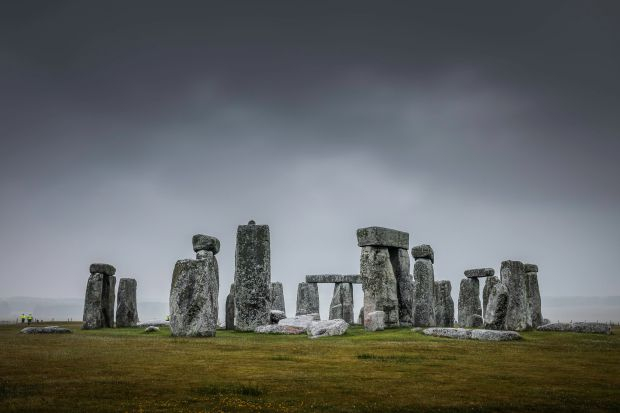
Stonehenge (Photo: Press Association) Secrets of Stonehenge (youtube: National Geographic) -
Machu Picchu, also spelled Machupijchu, site of ancient Inca ruins located about 50 miles (80 km) northwest of Cuzco, Peru, in the Cordillera de Vilcabamba of the Andes Mountains. It is perched above the Urubamba River valley in a narrow saddle between two sharp peaks—Machu Picchu (“Old Peak”) and Huayna Picchu (“New Peak”)—at an elevation of 7,710 feet (2,350 metres).
Few of Machu Picchu’s white granite structures have stonework as highly refined as that found in Cuzco, but several are worthy of note. In the southern part of the ruin is the Sacred Rock, also known as the Temple of the Sun (it was called the Mausoleum by Bingham). It centres on an inclined rock mass with a small grotto; walls of cut stone fill in some of its irregular features. Rising above the rock is the horseshoe-shaped enclosure known as the Military Tower. In the western part of Machu Picchu is the temple district, also known as the Acropolis. The Temple of the Three Windows is a hall 35 feet (10.6 metres) long and 14 feet (4.2 metres) wide with three trapezoidal windows (the largest known in Inca architecture) on one wall, which is built of polygonal stones. It stands near the southwestern corner of the Main Plaza. Also near the Main Plaza is the Intihuatana (Hitching Post of the Sun), a uniquely preserved ceremonial sundial consisting of a wide pillar and pedestal that were carved as a single unit and stand 6 feet (1.8 metres) tall. In 2000 this feature was damaged during the filming of a beer commercial. The Princess’s Palace is a bi-level structure of highly crafted stonework that probably housed a member of the Inca nobility. The Palace of the Inca is a complex of rooms with niched walls and a courtyard. At the other end of Machu Picchu, another path leads to the famous Inca Bridge, a rope structure that crosses the Urubamba River. Many other ruined cities—like that atop the dark peak of Huayna Picchu, which is accessible by a lengthy, precipitous stairway and trail—were built in the region; Machu Picchu is only the most extensively excavated of these.
One of the few major pre-Columbian ruins found nearly intact, Machu Picchu was designated a UNESCO World Heritage site in 1983.
Nation: Peru
Details: https://www.britannica.com/place/Machu-Picchu
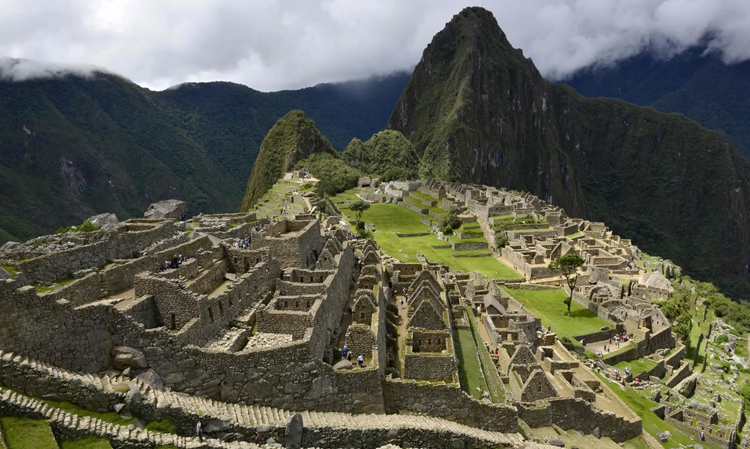
Machu Picchu (Photo: AFP) Machu Picchu 101 (youtube: National Geographic) -
Leaning Tower of Pisa, Italian Torre Pendente di Pisa, medieval structure in Pisa, Italy, that is famous for the settling of its foundations, which caused it to lean 5.5 degrees (about 15 feet [4.5 metres]) from the perpendicular in the late 20th century. Extensive work was subsequently done to straighten the tower, and its lean was ultimately reduced to less than 4.0 degrees.
Engineers sought solutions to the leaning problem, but the tower was ultimately topped out in the 14th century. Twin spiral staircases lined the tower’s interior, with 294 steps leading from the ground to the bell chamber (one staircase incorporates two additional steps to compensate for the tower’s lean). Over the next four centuries the tower’s seven bells were installed; the largest weighed more than 3,600 kg (nearly 8,000 pounds). By the early 20th century, however, the heavier bells were silenced, as it was believed that their movement could potentially worsen the tower’s lean. The foundations have been strengthened by the injection of cement grout and various types of bracing and reinforcement, but in the late 20th century the structure was still subsiding, at the rate of 0.05 inch (1.2 mm) per year, and was in danger of collapse. In 1990 the tower was closed and all the bells silenced as engineers undertook a major straightening project. Earth was siphoned from underneath the foundations, decreasing the lean by 17 inches (44 cm) to 13.5 feet (4.1 metres).
Nation: Italy
Details: https://www.britannica.com/topic/Leaning-Tower-of-Pisa
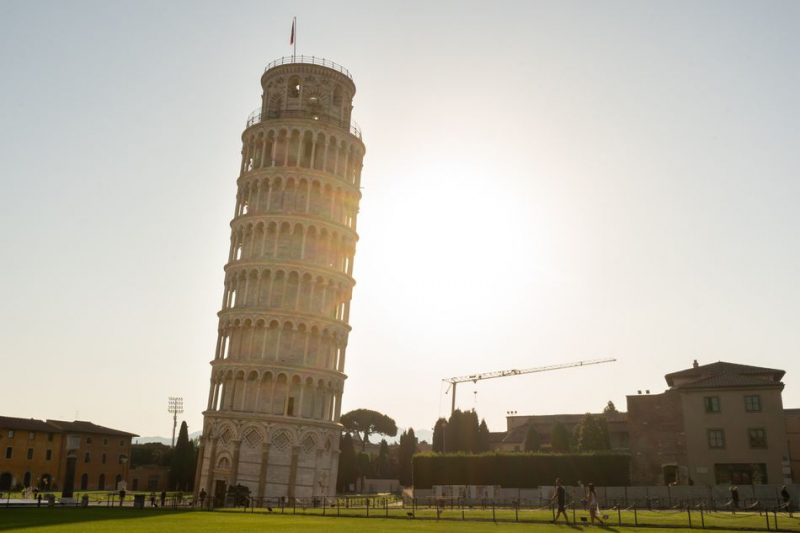
Leaning Tower of Pisa (Photo: Jamie Ditaranto) The Leaning Tower Of Pisa: Italy’s Legendary Architectural Mistake (youtube: Discovery UK Discovery UK) -
Angkor Wat, temple complex at Angkor, near Siĕmréab, Cambodia, that was built in the 12th century by King Suryavarman II (reigned 1113–c. 1150). The vast religious complex of Angkor Wat comprises more than a thousand buildings, and it is one of the great cultural wonders of the world. Angkor Wat is the world’s largest religious structure, covering some 400 acres (160 hectares), and marks the high point of Khmer architecture. It was built by Suryavarman II as a vast funerary temple within which his remains were to be deposited. Construction is believed to have spanned some three decades.
All of the original religious motifs derived from Hinduism, and the temple was dedicated to the gods Shiva, Brahma, and Vishnu. The five central towers of Angkor Wat symbolize the peaks of Mount Meru, which according to Hindu mythology is the dwelling place of the gods. The mountain is said to be surrounded by an ocean, and the complex’s enormous moat suggests the oceans at the edge of the world. A 617-foot (188-metre) bridge allows access to the site. The temple is reached by passing through three galleries, each separated by a paved walkway. The temple walls are covered with bas-relief sculptures of very high quality, representing Hindu gods and ancient Khmer scenes as well as scenes from the Mahabharata and the Ramayana. In 1992 the Angkor complex, which included Angkor Wat, was designated a World Heritage site by UNESCO and was immediately added to the list of World Heritage in Danger.
Nation: Cambodia
Details: https://www.britannica.com/topic/Angkor-Wat
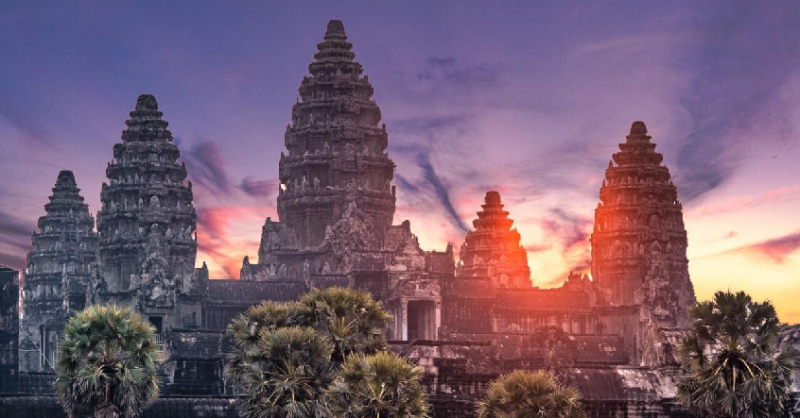
Angkor Wat (Photo: vntrip.vn) Angkor Wat (Full Episode) (youtube: National Geographic)












